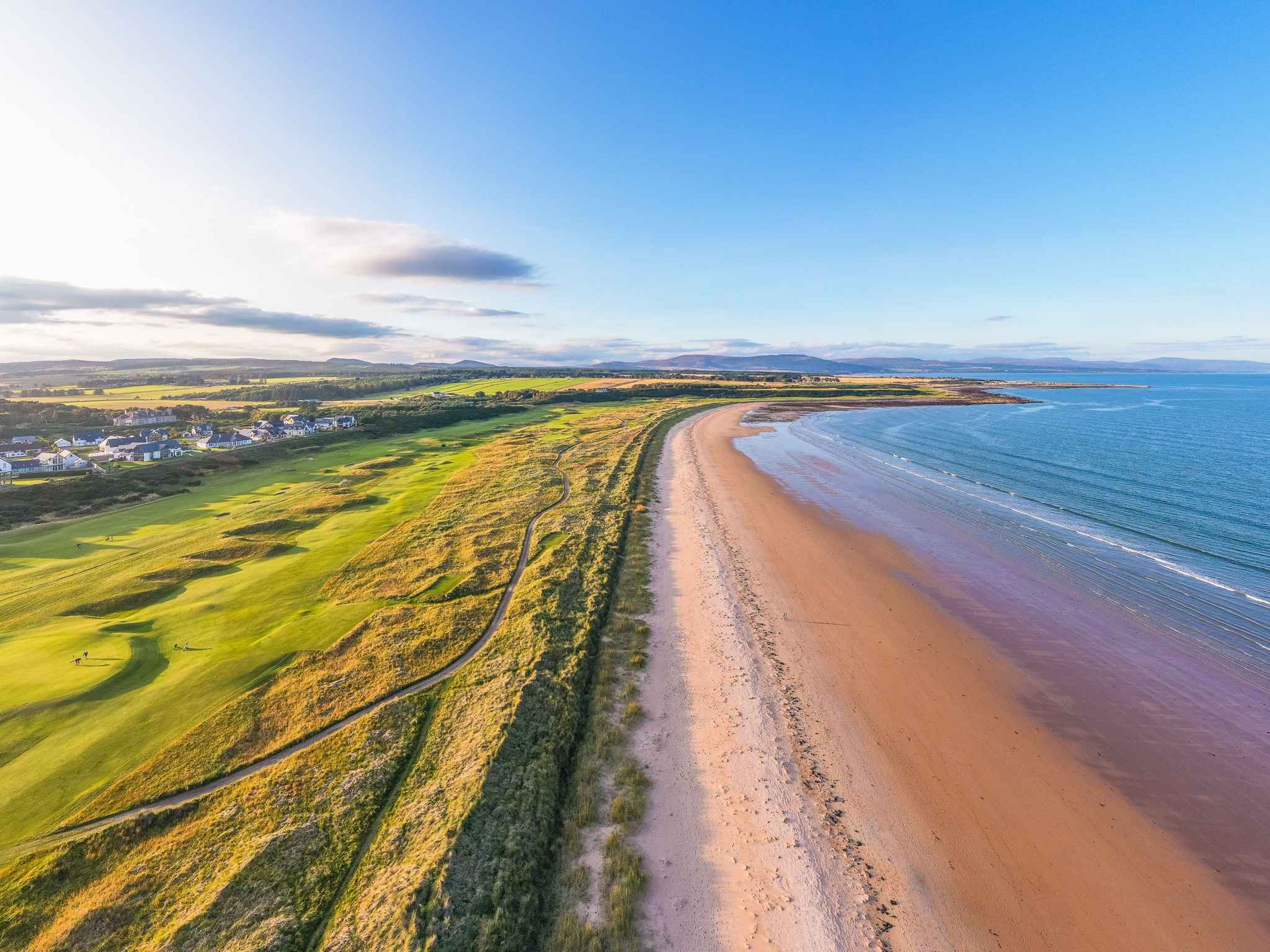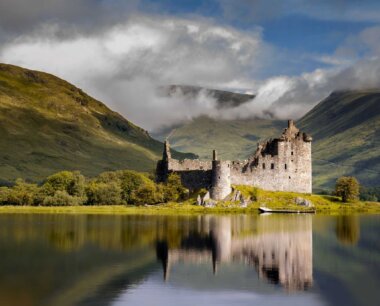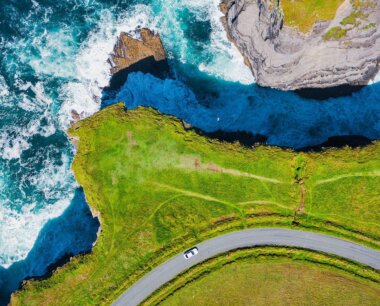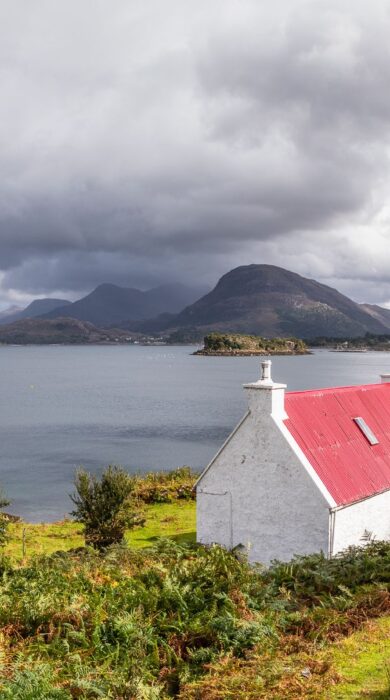
The Most Spectacular Places To Visit On The North Coast 500
Stunning coastal scenery, magnificent Munros, historic castles and vast lochs, Scotland’s version of a road trip will leave you in awe…
Launched in 2015, the North Coast 500 encompasses over 500 miles of wild scenery, secluded beaches and historic castles in Scotland’s northern highlands. Starting and ending in Inverness, or specifically Inverness Castle, you will tick off the regions of Wester Ross, Caithness, Easter Ross, Black Isle, Sutherland and Inverness-shire.
Inverness
The NC500 starts in the capital of the Highlands. But don’t make the mistake of using Inverness just as a jumping-off point for your road trip. Sitting beside the River Ness, and dominated by the towering Inverness Castle, there is plenty to keep you occupied for a day or two. From exploring the castle or a taking a riverside stroll to trying out the city’s mouth-watering Scottish cuisine, make this the first highlight of your NC500 road trip.
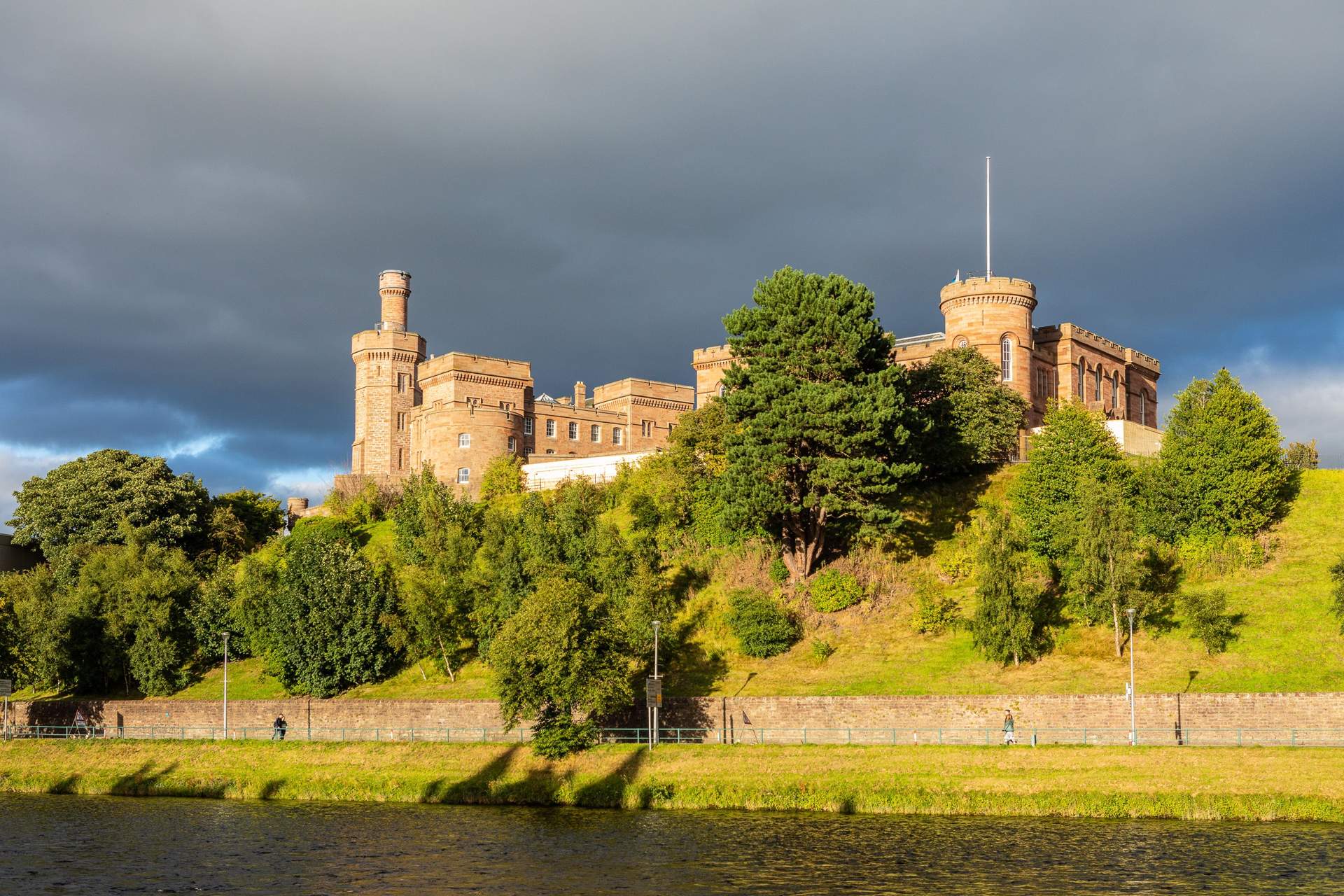
DETOUR TIP: Whilst not officially on the NC500 route, there are plenty of short detours you can make from Inverness. Just over 5 miles east will bring you to the historic site of the last battle of the Jacobite Rising, the Culloden Battlefield. A little further (20 miles east of Inverness) you can visit the gorgeous Brodie Castle. Or 18 miles south of Inverness will bring you to Urquhart Castle, exquisitely perched on the edge of the infamous Loch Ness.
Rogie Falls
As you make your way along the A835 west, be sure to stop at Rogie Falls. A brief half-a-mile walk through the woods will bring you to a suspension bridge over the Black Water river with remarkable views of the falls. The falls are impressive, but the highlight of your visit will be seeing the wild salmon leaping upstream (in August and September). You can return the same way or take the slightly longer ¾ mile route back to the car park.
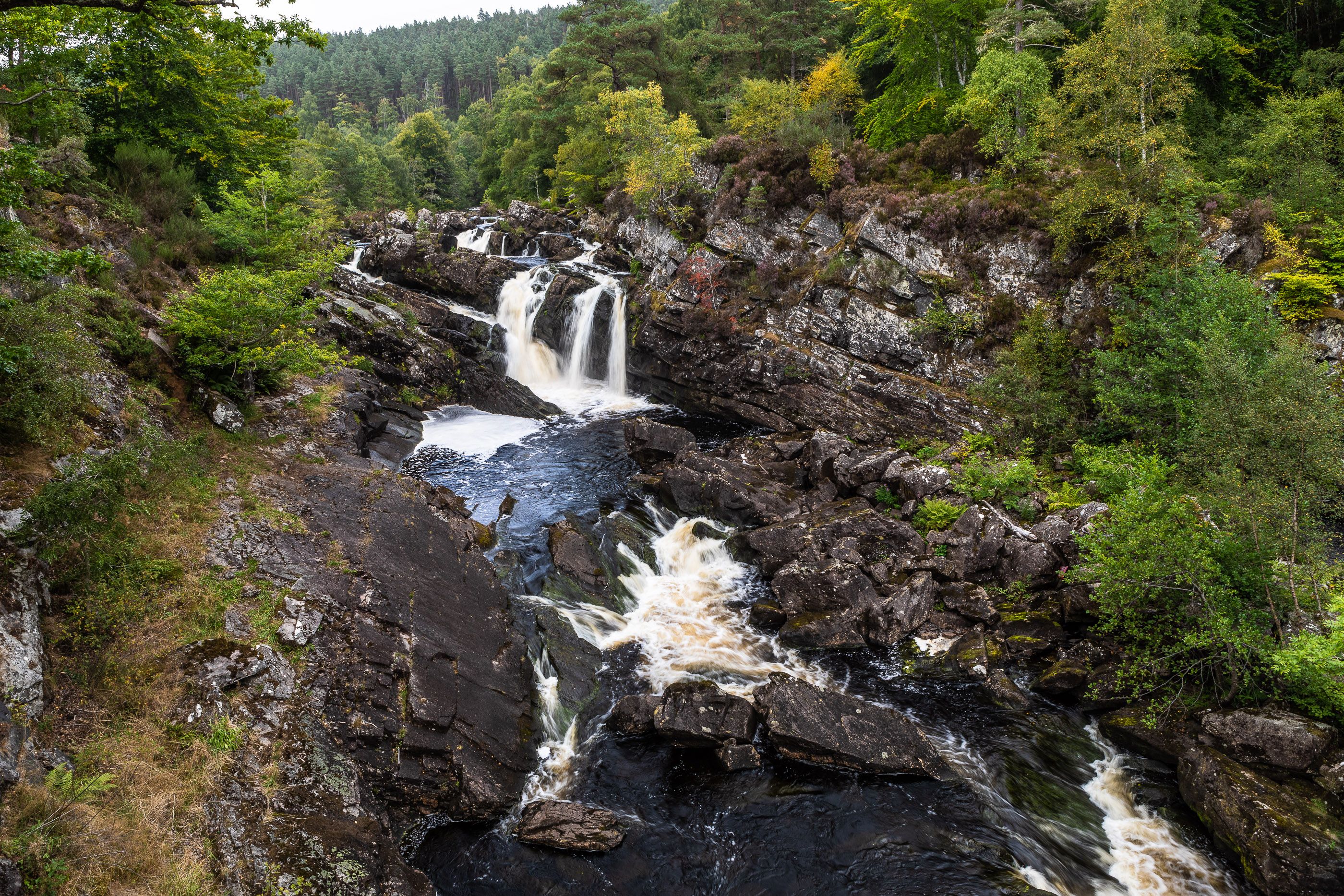
Bealach na Bà
Continue to make your way west and you will reach Lochcarron and the adjoining Loch Kishorn. Keep following the A896 and you will reach a left turn with signs to Applecross that will take you on a stretch of road known as Bealach na Bà. This is a paved single-track road in the Applecross peninsula with steep gradients and sharp hairpin bends. It is not for the faint-hearted, learner drivers or those with large vehicles such as caravans and requires absolute concentration. Along the route and at the top, which climbs to 626m, you will be rewarded with incredible views of Wester Ross, Isle of Skye, Isle of Rum and the Outer Hebrides.
NOTE: Bealach na Bà is closed during the winter months due to ice and snow.
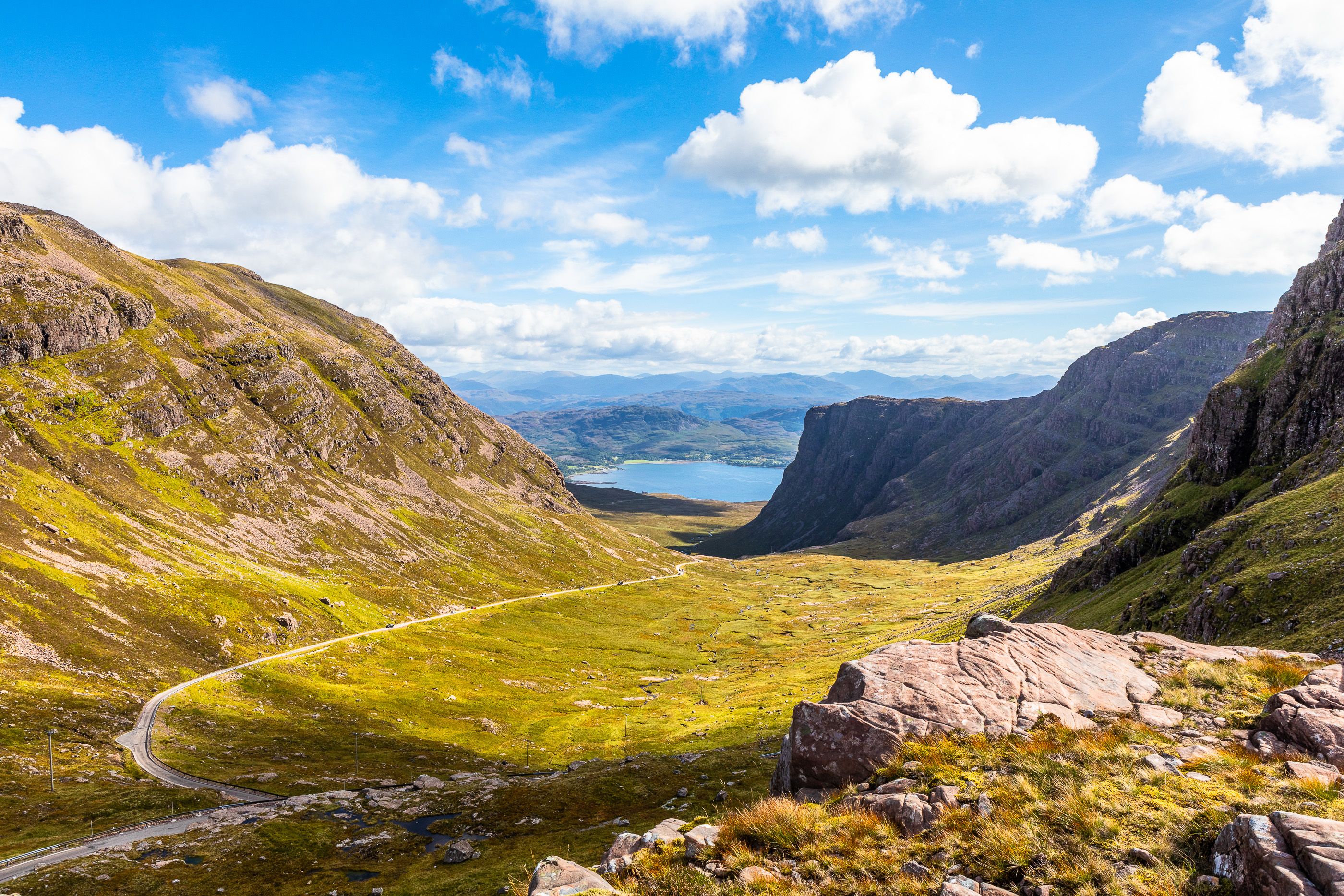
Shieldaig
Take a string of whitewashed cottages, place them next to a gorgeous loch with a backdrop of imposing mountains and you have Shieldaig. This delightful village sits along the shore of Loch Shieldaig and Loch Torridon and might be the most picturesque you will come across on the NC500. The village itself is best viewed from the road that leads to Applecross, which is in itself is a stunning 25 mile, 1-hour drive. There are a handful of tourist services in the village such as a local shop, hotels, and some excellent restaurants. Or you could simply park up and enjoy the beautiful views of Shieldaig Island from the shore of the loch.
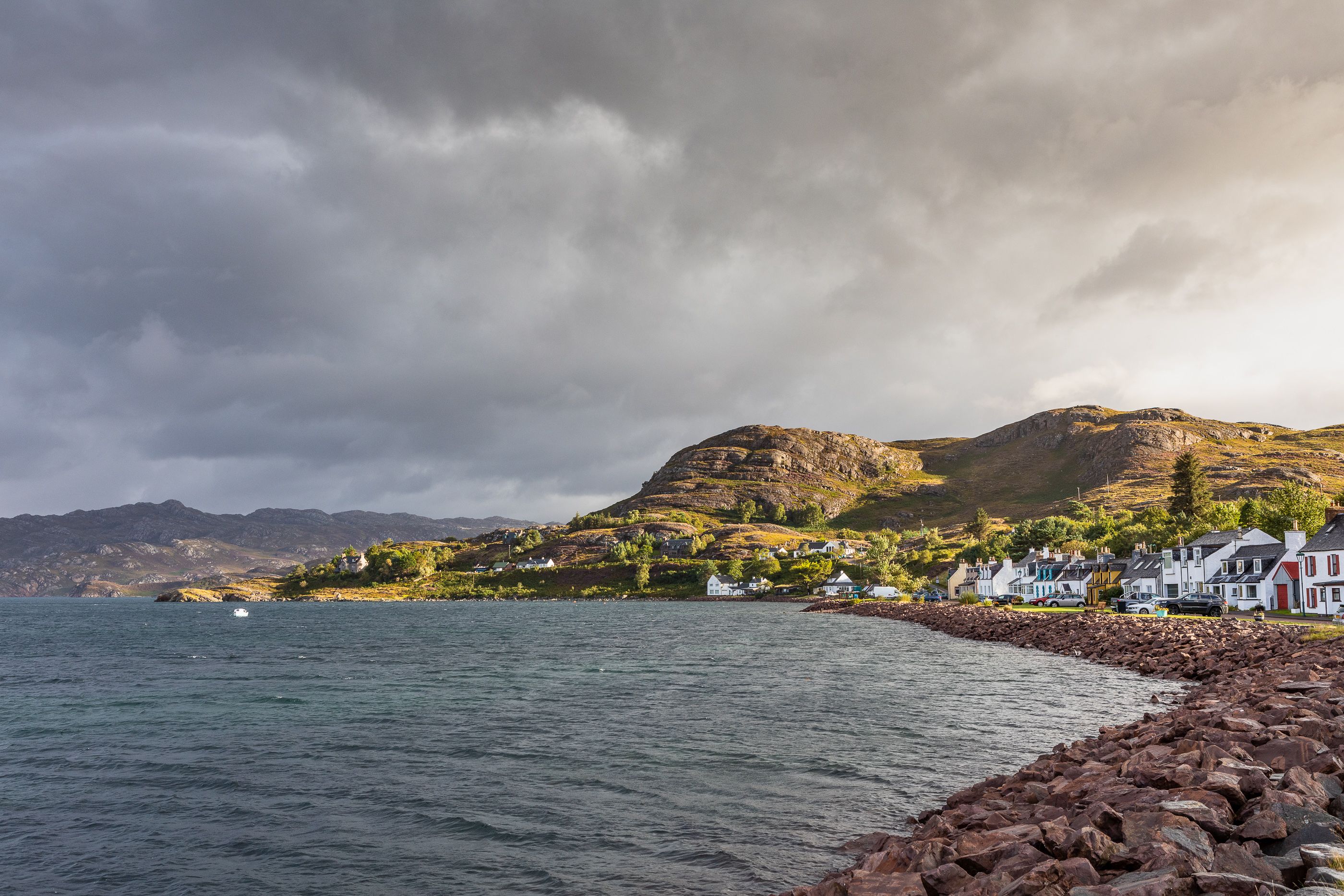
DETOUR TIP: If you are driving from Shieldaig to Applecross (or vice versa), be sure to stop at award winning Applecross Smokehouse. Established in 1998, they sell a range of smoked seafood and cheeses from their shop (or online).
Beinn Eighe National Reserve & Loch Maree
Britain’s first National Nature Reserve, Beinn Eighe offers a host of trails to suit everyone. The reserve is flanked by the impressive Beinn Eighe ridge on one side and Slioch on the other. This is an area teeming with wildlife including the golden eagle. There is a visitor centre outside Kinlochewe which is open from April to October.
If you prefer to just enjoy the views, keep driving along Loch Maree until you reach Slattadale and make your way along the narrow road through the forest to the Loch Maree picnic site. There is plenty of parking and easy access to the shore of Loch Maree with possibly the best view of Slioch mountain peak in the distance.
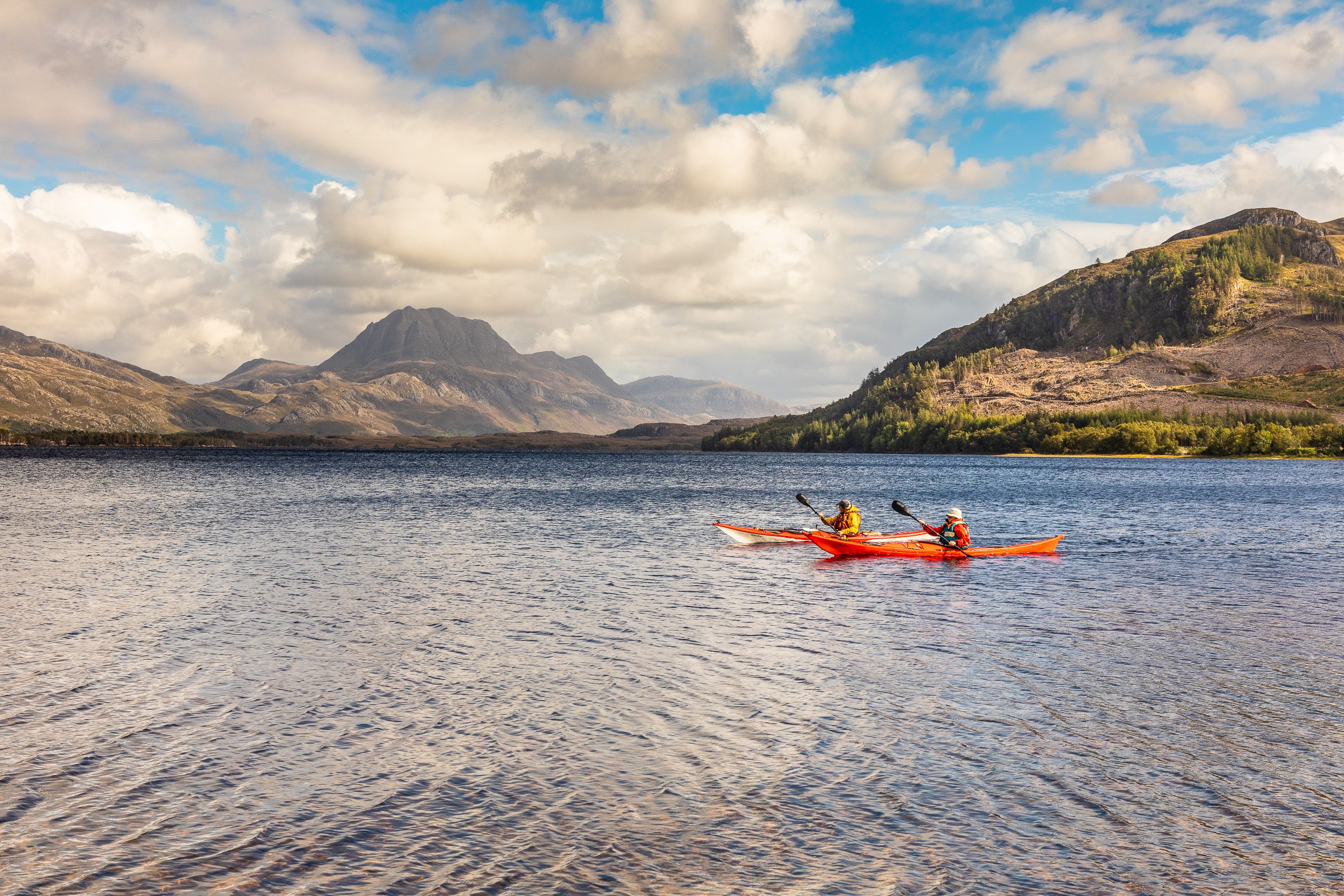
Mellon Udrigle Beach
There are no shortages of stunning beaches vying for the title of the “best beach in northern Scotland” on the NC500. No one would begrudge this spectacular stretch of sand taking the title. What makes Mellon Udrigle Beach so special is the unrivalled backdrop that is visible from its white sand beach. Across the turquoise water, you will be able to see the distinctive outline of Suilven. Look closely enough and you will also be able to spot the top of Stac Pollaidh and An Teallach to the east. While the beach is not situated on the NC500 route, this short detour is well worth it for the stunning vistas you will be treated to.
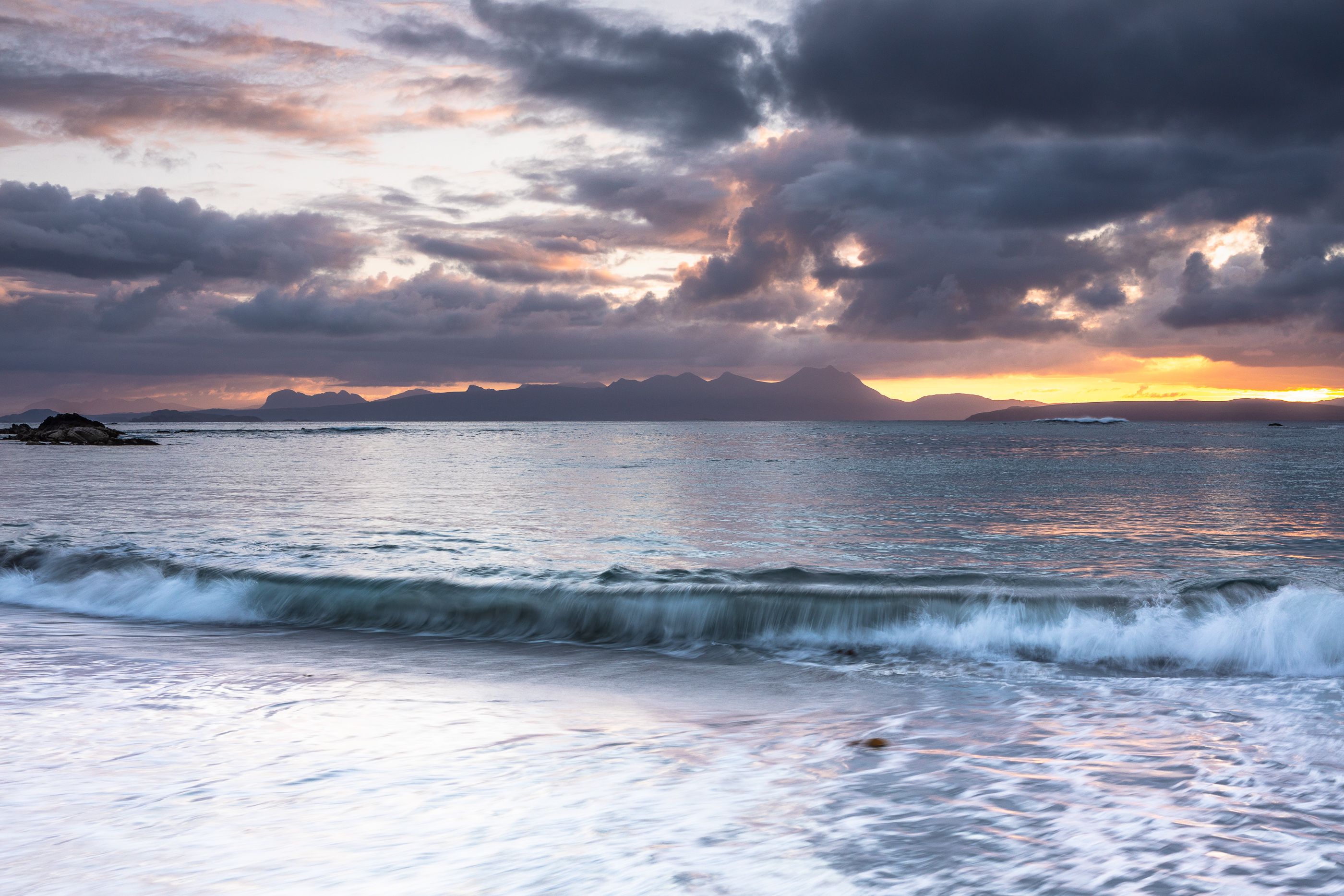
Stac Pollaidh
As you continue north past Ullapool you may begin to get glimpses of this giant iconic mountain. Standing at 613 metres, Stac Polly, or Stac Pollaidh as its officially called, means “peak of the peat moss”. Due to its fame, unfortunately this is not somewhere you will find solitude. But regardless, the views from the unofficial peak are awe-inspiring. The route to the top is easy to navigate thanks to clear paths, but the final ascent to the actual peak should only be attempted by very experienced expert climbers. There is no clear path at this point with many deep ravines. Even if you don’t plan on climbing Stac Pollaidh it is still worth heading to the small car park and walking a short way down to Loch Lurgainn for an uninterrupted view of this famous Scottish icon.

Suilven
The unmistakable shape of Suilven mountain seems to make an appearance wherever you look when you are in this part of the highlands. It would almost be rude not to pay her a closer visit. It is one of Scotland’s best-known mountains and sits in the heart of the Assynt. For the serious walker, the 12.5-mile hike to the summit at 731 meters will provide spectacular views.
For those who want to take in the view of the Suilven itself, head to the Falls of Kirkaig. The walk to the falls from the car park is around 7km and is mostly flat with an easy terrain up to the fork in the path that leads down to the falls. From here, the walk down (and back up) involves scrambling on very steep rocks and great care should be taken. Continue on the path instead of heading down to the falls and you will eventually reach Fionn Loch where you can admire Suilven in all her glory.
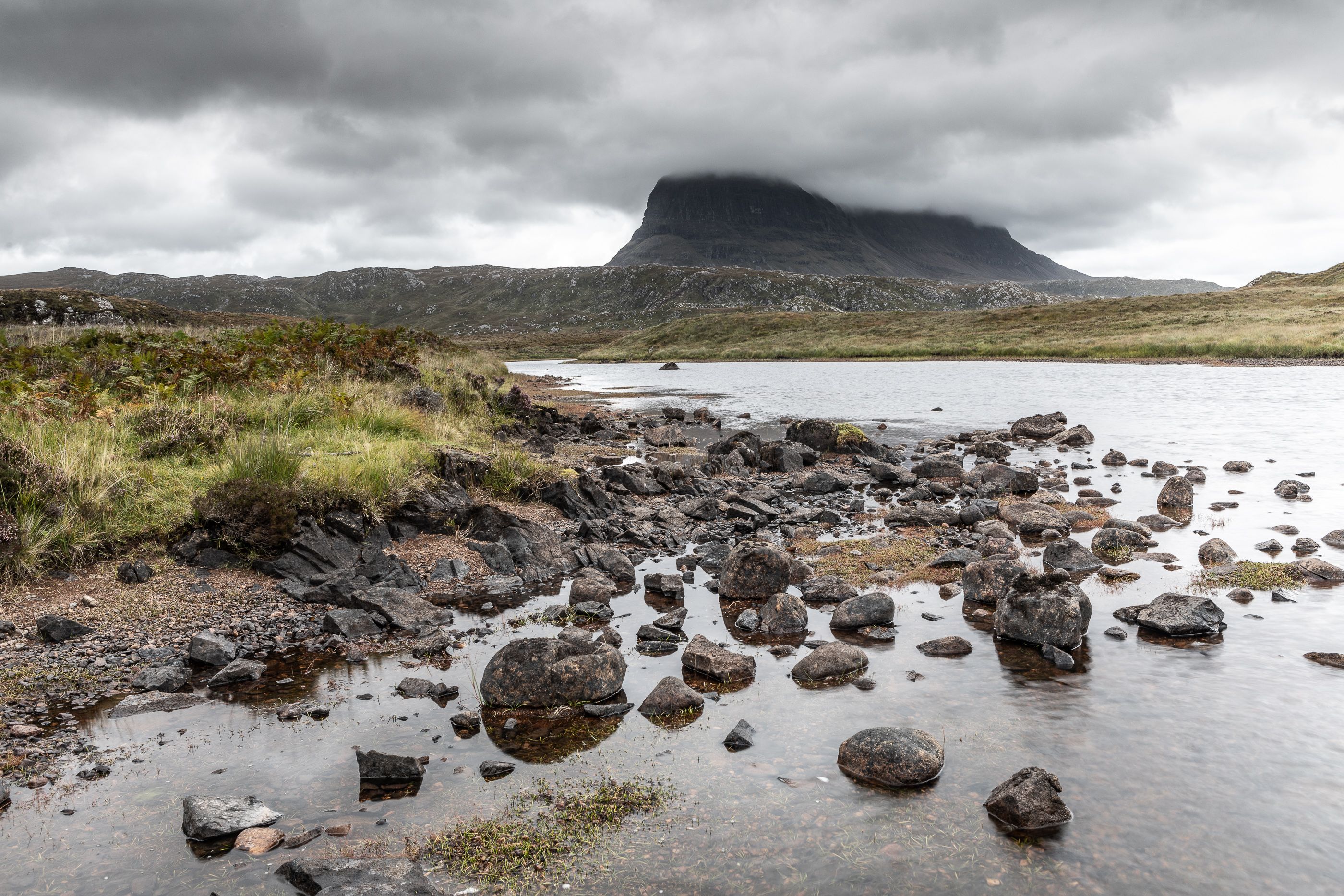
Achmelvich Beach & Hermit’s Castle
This white sandy beach will be busy in the summer months due to its position next to a popular camping and caravan park. But don’t let this discourage you as this area offers a whole host of walks including walking to Suilven. The gorgeous crescent shape beach wouldn’t look a miss in the Mediterranean and the surrounding areas make for wonderful walks.
This is also the place for possibly the most peculiar structure in the whole of Scotland. If you can find it amongst the rocks, the Hermit’s Castle is supposedly Europe’s smallest castle. It is believed that it was built single-handed over 6 months in 1950 by David Scott, an architect from Norwich. But after spending a weekend there he left, never to return. Walk to west side of the beach and keep going up onto the rocks and onto the flat area at the top. See if you can spot the castle in amongst the rocks.
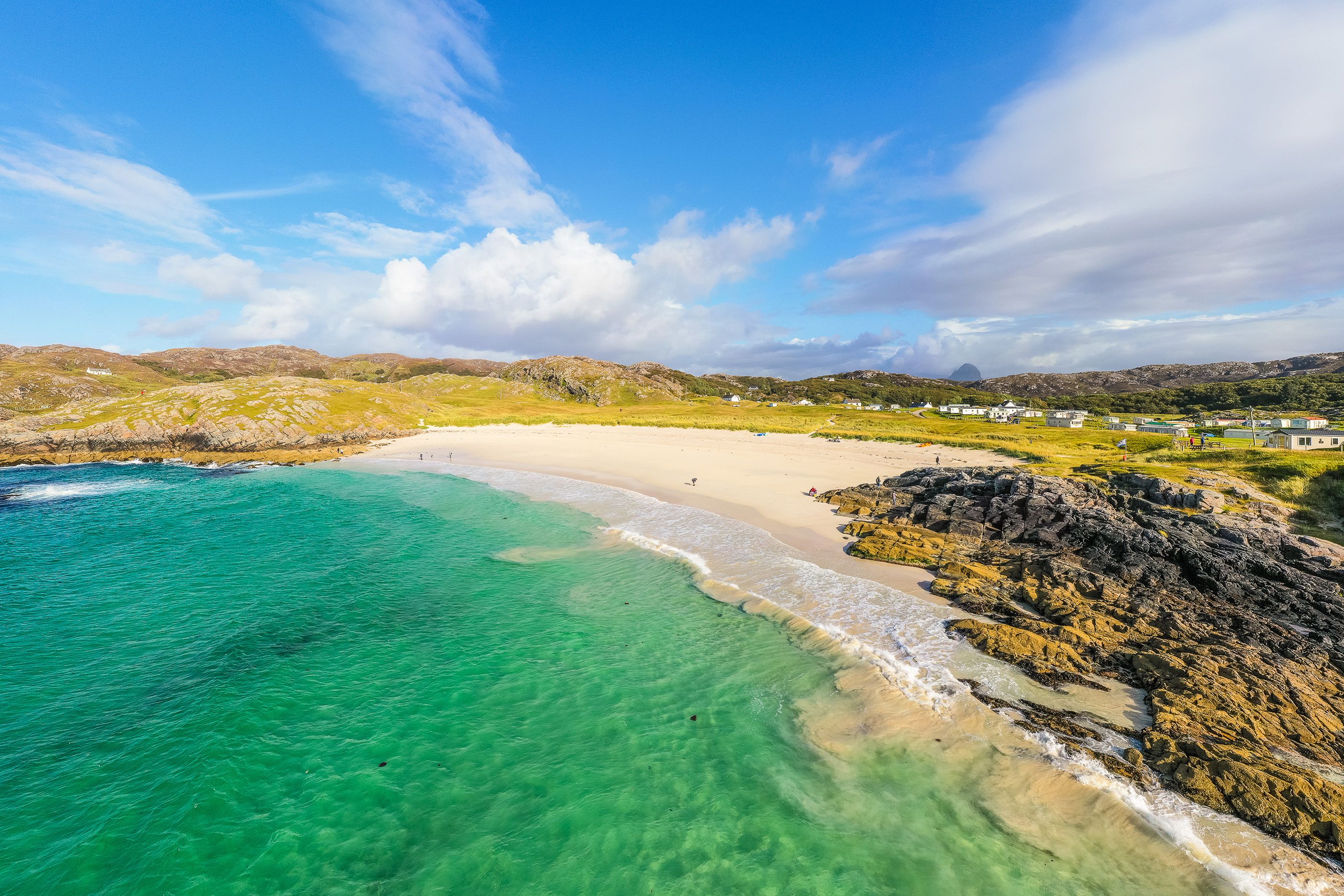
DETOUR TIP: 13.5 miles east of Achmelvich Beach stands another one of the picturesque castles of the NC500. Beautifully set on Loch Assynt to a backdrop of Ben More Assynt, Ardvreck Castle dates to the late 14th century. It claimed its place in history as the setting for one of the great betrayals of Highland hospitality.
The Marquis of Montrose, a Royalist commander, fleeing after losing the battle of Carbisdale, sought refuge in the castle. He was welcomed by Neil Macleod’s wife who subsequently tricked him into entering the dungeon before imprisoning him and sending for government troops. He was taken to Edinburgh and executed a few days later.
Old Man of Stoer
Another worthwhile detour as you make your way through West Sutherland is to the Old Man of Stoer. The 60-meter-high sea stack is around 4.25 miles (7 km) from the car park with a mostly flat terrain along the coast. The scenery is spectacular and don’t be surprised if you spot seals, dolphins, whales and even Basking Sharks in the sea.
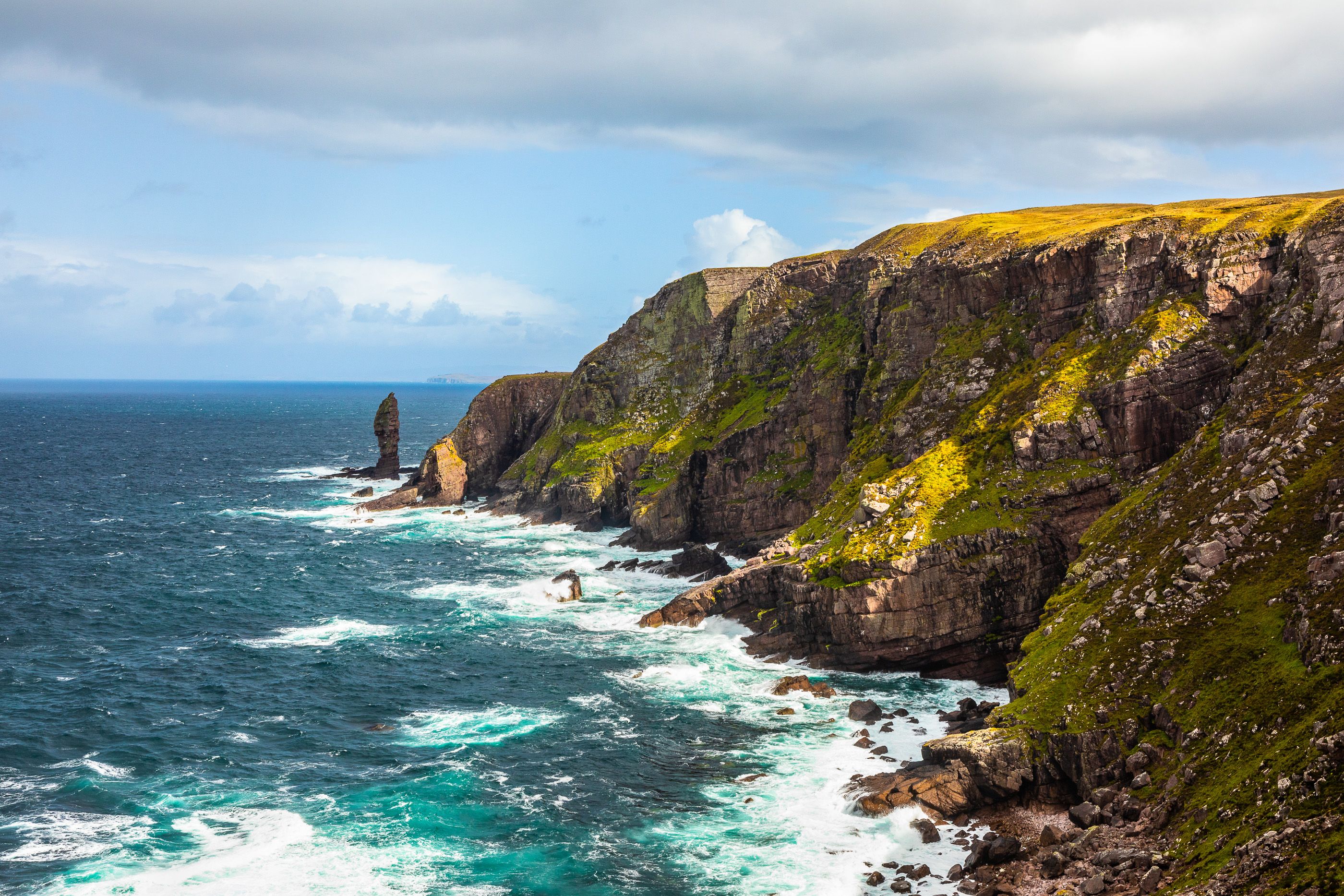
TIP: Continuing on the NC500 will take you over Kylesku Bridge. Built-in 1984 to replace the ferry that was required to cross, the bridge is near Loch Glencoul. This is where you will find Britain’s highest waterfall at 638 feet.
Sandwood Bay
The first glimpse of the wild North Atlantic crashing onto the shores of this incredible 1.5-mile-long secluded pink sand beach comes as you pass Sandwood Loch. As you reach the huge sand dunes just before the beach, you know you have arrived somewhere extraordinary. Flanked by cliffs on both sides and Am Bauachaille sea stack in the distance, don’t be surprised to find this unspoilt corner to yourself. This is your just reward for the 4-mile hike that is required to get there.
Managed by the John Muir Trust, Sandwood Bay is one of the most remote and beautiful beaches in the whole of the United Kingdom. The walk from the car park of Blairmore hamlet is mostly flat through moorland on a well-trodden path. Along the way, look-out for the roofless remains of Sandwood Cottage which myth has it is haunted by the ghost of a mariner.
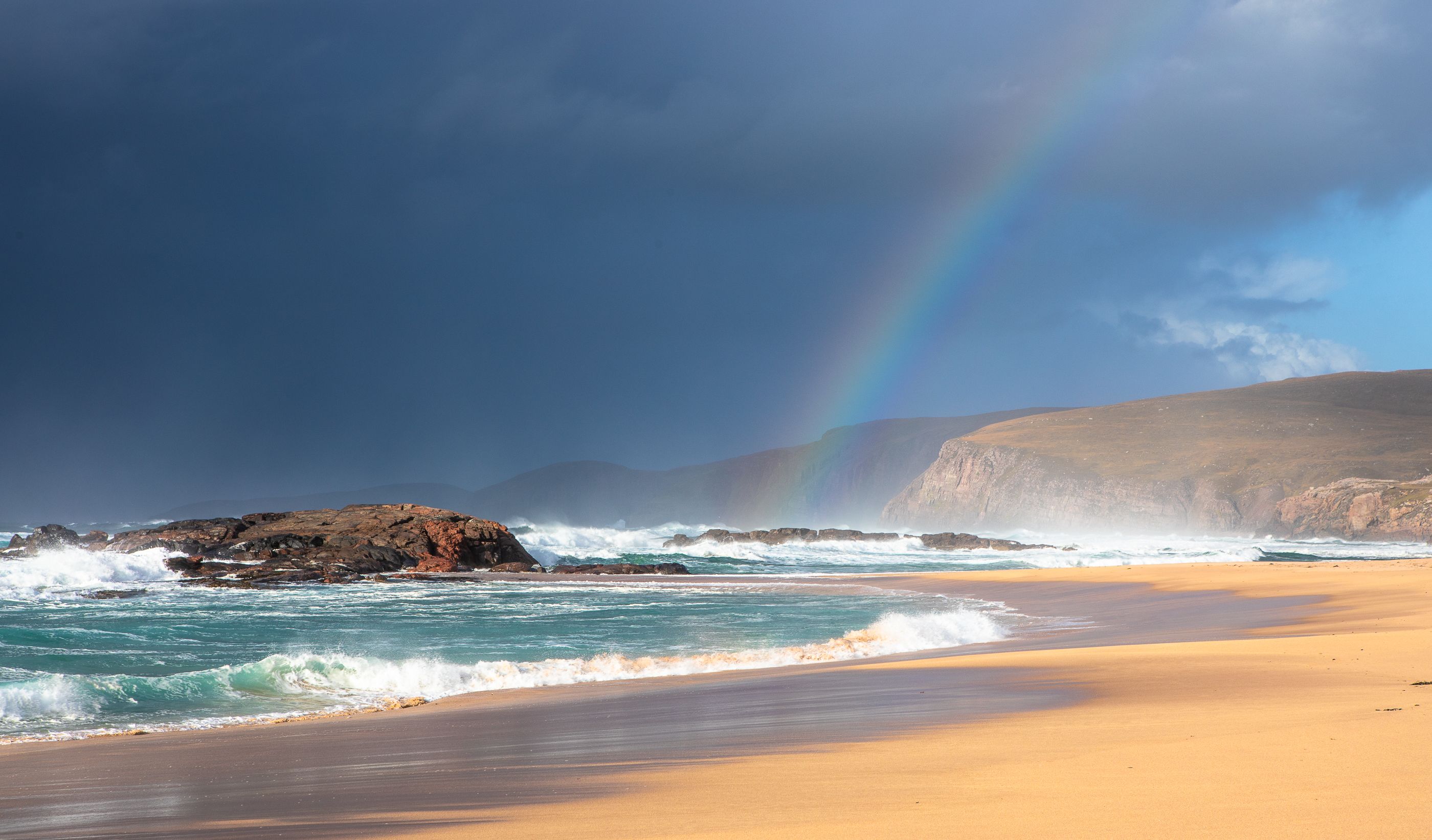
DETOUR TIP: It will not have the same secluded feeling as Sandwood Bay, but nearby Oldshoremore Beach or locally known Am Meallan, is one of the most beautiful beaches in Sutherland. The small parking area is just a few hundred metres from the beach making it much easier to get to than Sandwood Bay.
Durness
Durness is the most north-westerly village in the British mainland and a good stop on the NC500 to stock up on the essentials such as fuel. There is also an excellent tourist information centre, a small supermarket and cash machines.
There are several highlights here including Smoo Cave (the largest cave in Scotland) and Balnakiel beach which also happens to provide a beautiful backdrop to the ruins of the old Balnakiel Church. Sango Bay sits in the main part of the village and is another one of the beautiful beaches and coastlines in Northern Scotland. Walk onto the viewing platform on the west side of the beach for panoramic views of the entire coast.
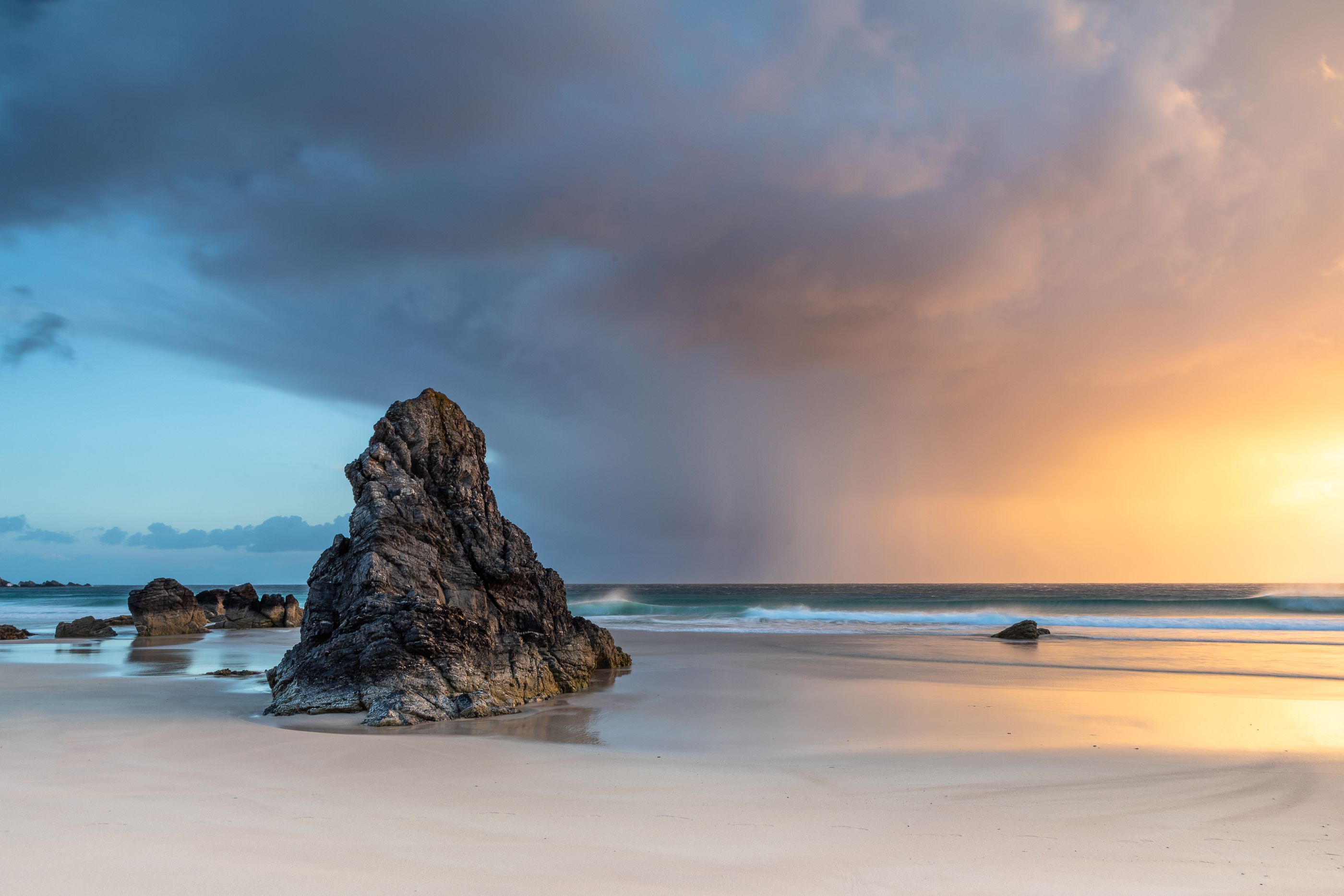
Kyle of Tongue
As you begin to make your way east from Durness on the north coast of Scotland, you will eventually reach the charming village of Tongue. Sitting beside the tranquil Kyle of Tongue, which is dissected by a causeway, the imposing mountains of Ben Hope and the “Queen of Scottish mountains” – Ben Loyal seem to always be looming over you. The views from the causeway, which has a couple of car parks, are impressive. But the best views are from the single-track road that circles the southern end of the Kyle of Tongue. There are not many parking places on this single track road, so take it slow and enjoy the view.
Overlooking Kyle of Tongue on the summit of a bluff is a small tower called Castle Varrich (also known as Caisteal Bharraigh). Many believe it was built by the Vikings or the Norse. Others believe it was built by the Mackay family or the Bishops of Caithness in the 1500s. What is certain is that the views of the Kyle of Tongue are magnificent from here.
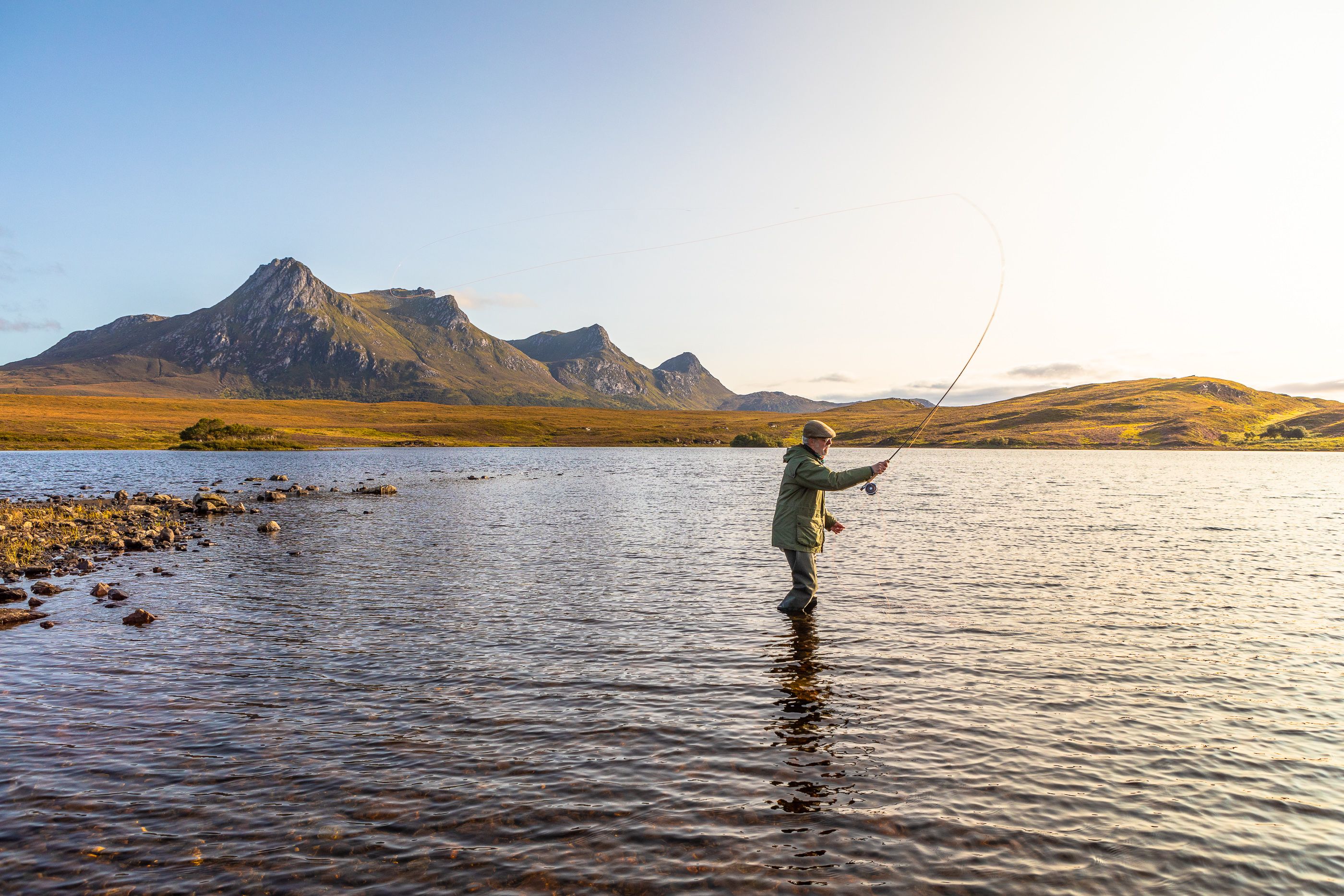
Dunnet Head & John O’Groats
Jutting out into the North Sea, Dunnet Head is the most northerly point of mainland Britain. The views are magnificent and if visibility is good you can see the Old Man of Hoy in Orkney in the distance. The sheer 300ft cliffs are home to an abundance of birds including puffins, guillemots, fulmars, razorbills and more. Nearby, a visit to the famous John O’Groats is also worthwhile. Named after the Dutchman who ran a ferry to Orkney, Jan de Groot, this is an area teeming with wildlife and offers plenty of activities. From guided walks to trips to Orkney, it’s a popular stop on the NC500 road trip. This is also the end (or start) point for the epic End to End challenge. An 874-mile test of endurance that connects John O’Groats to Land’s End in Cornwall (or vice versa).

DETOUR TIP: En route from the Kyle of Tongue, make a stop at Strathy Point Lighthouse (somewhere you can book to stay at). It might be tempting to drive past but the views from the cliff tops around the lighthouse are incredible and include a dramatic sea arch and possible whale and dolphin sightings in the summer months.
Duncansby Stacks
If there was one image that could evoke the sheer striking beauty of Northern Scotland, it would be these incredible sea stacks. For many, these are the highlights of the NC500. The walk from the car park is easy along clear paths. Soon you will get your first glimpse of Thirle Door and the Stacks of Duncansby. The further you walk along the cliff tops the more your angle of view changes and the quieter the experience becomes. There is a vast variety of birds that nest along the cliffs so bird lovers should take their binoculars. This is a place that you will want to savour, so give yourself plenty of time to explore it.
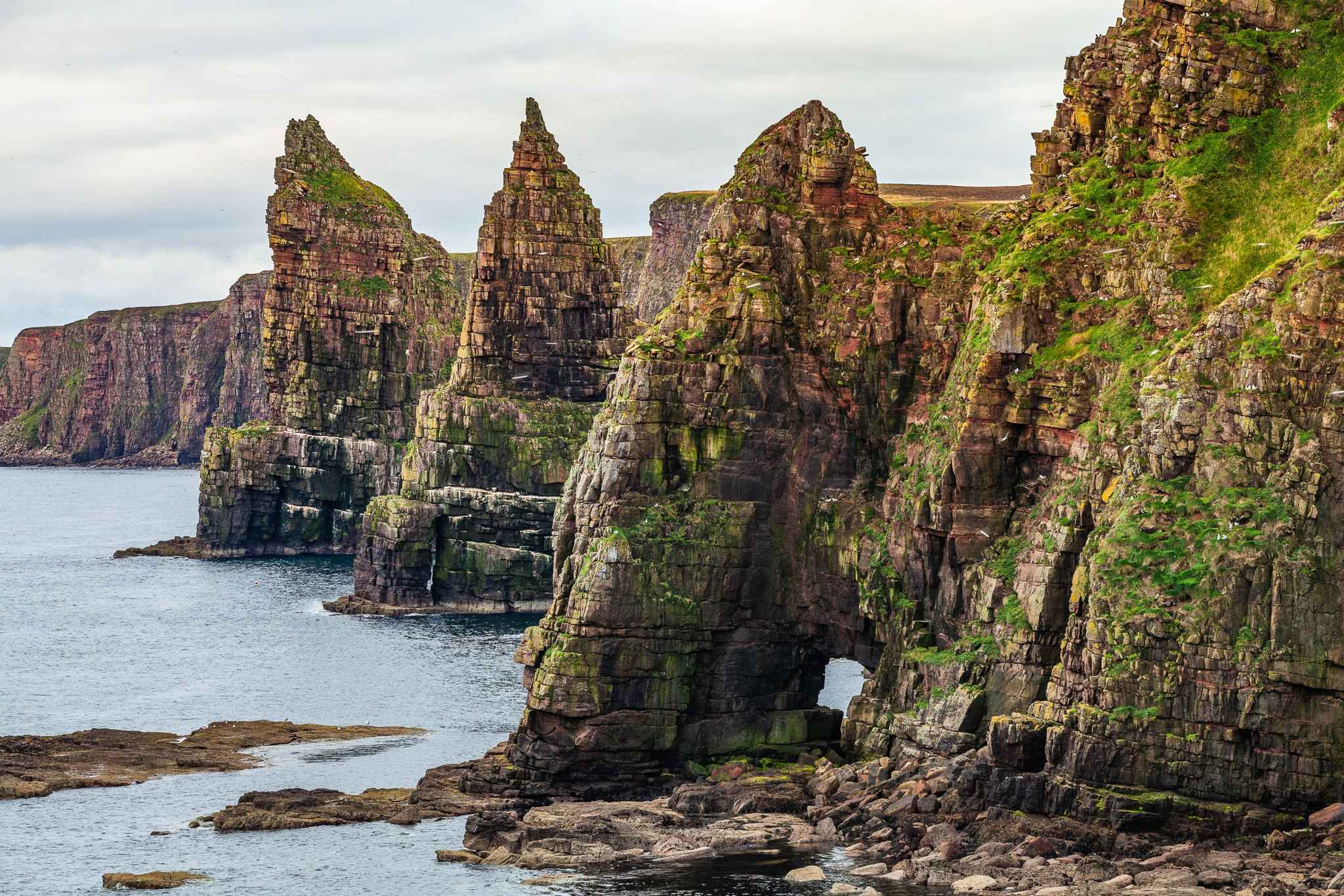
Dunrobin Castle
Dunrobin Castle is one of the oldest, biggest, and most iconic castles in Scotland. The castle looks like it has been plucked from Southern France with its towering spires and perfectly manicured gardens. Overlooking Moray Firth, it was once the home of the Earls and later Dukes of Sutherland – one of the most powerful families in Scotland. The castle was used as a naval hospital during the First World War when a fire damaged some parts of it. The resulting repairs were overseen by Scottish architect Sir Robert Lorimer who made major changes to the interior and the main tower we see today.
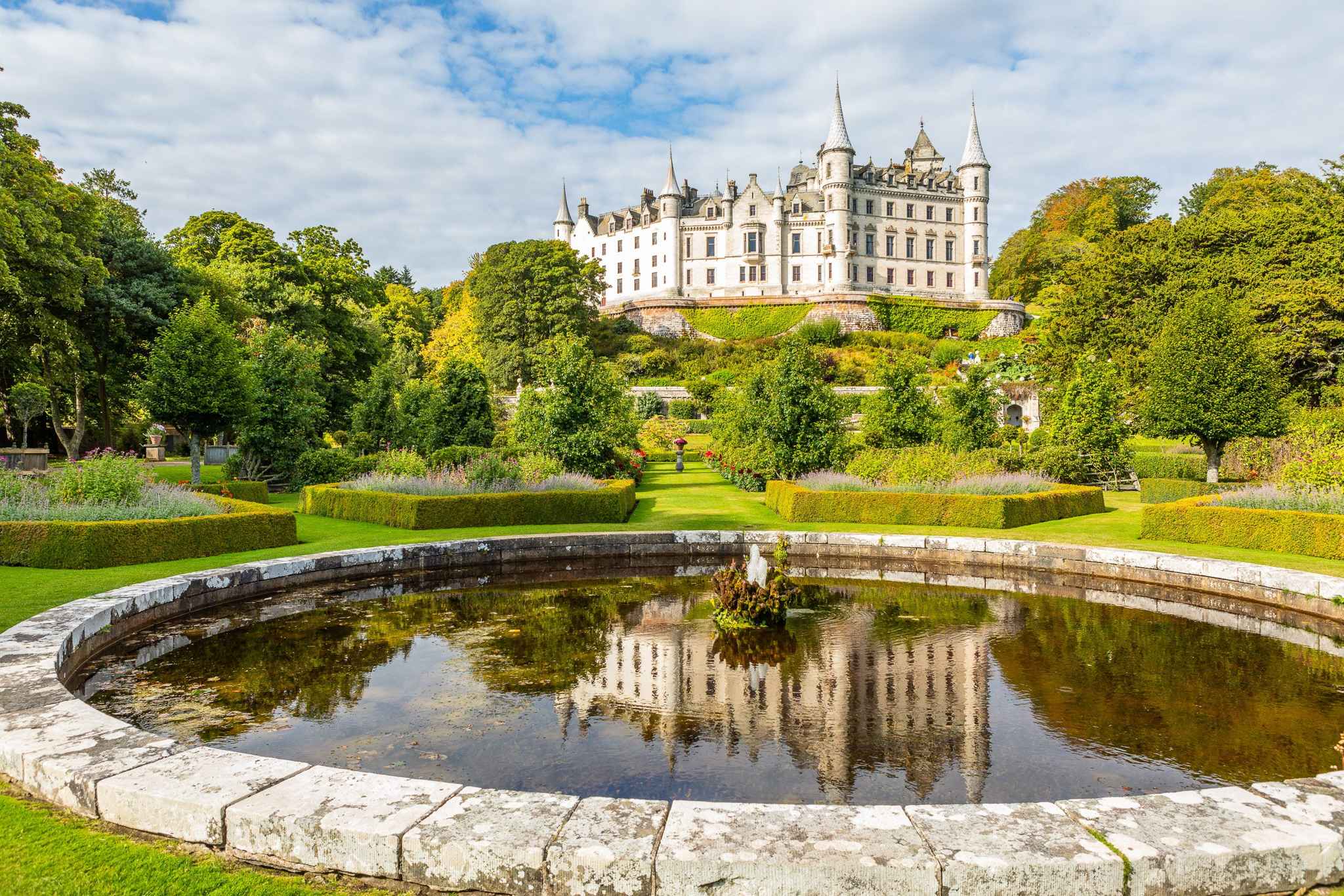
Dornoch
There is plenty to keep anyone entertained in and around Dornoch for a few days. Bird and wildlife lovers will enjoy visiting the tidal basin of Loch Fleet National Nature Reserve which is filled with birds, otters and seals as well as a variety of flora and fauna. If you prefer to wind down after your long journey on the NC500, the beautiful golden and white sand beaches of Dornoch Beach and Embo Beach might be just what you need.
There is also the historic town of Dornoch itself with its beautiful cathedral and stone houses. Legend has it, that this was the site of the last ever witch burning in Scotland.
